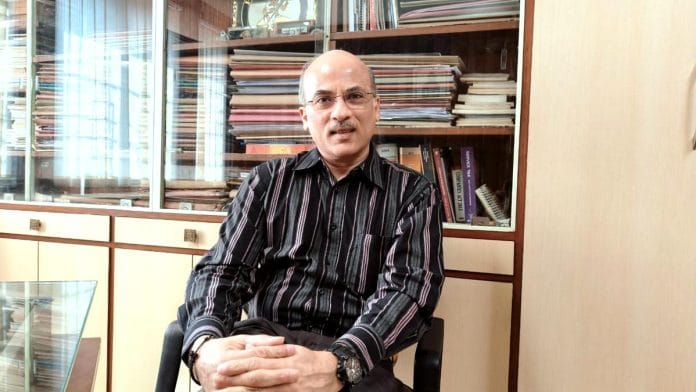Mumbai: Sooraj Barjatya built his career on the Great Big Happy Indian Joint Family—all sanskaar, simplicity, and submission to the patriarch. But both he and his stories are evolving. In Uunchai, his first film in seven years, friendship replaced romance. Now, with Bada Naam Karenge, his first OTT series, the arranged marriage meet-cute of Vivah collides with Gen Z. The sanskaars stay, but this time there’s more space for subversion.
It’s the 60-year-old filmmaker’s way of bridging the generation gap and to update the Rajshri family saga without yanking it from its roots.
“I’ll be happiest if a youngster takes a subscription to watch this show with his grandparents,” said the soft-spoken Barjatya, who’s the showrunner but not the director of Bada Naam Karenge. “It’s the young who are primarily watching OTT content, that too on their laptops. Everyone is watching on their own. I wanted to make something even grandparents can watch, and the young can watch with them.”
For decades, Barjatya’s films were shorthand for old-school Indian family values. Weddings were lavish, parents were paramount, and love was best expressed through stolen glances across antakshari sessions. Maine Pyar Kiya (1989), Hum Aapke Hain Koun..! (1994), and Hum Saath-Saath Hain (1999) reinforced Barjatya’s vision of love and duty—they built a universe where sincerity triumphed over cynicism, the biggest villains were misunderstandings, and the lead character was always a golden-hearted ‘Prem’, usually played by Salman Khan.
But after Prem Ratan Dhan Payo (2015), Barjatya took a step back. He continued overseeing Rajshri’s projects but wasn’t directing. It wasn’t until Uunchai (2022) that he returned, this time with no Prem, no wedding gala. Instead, it was a story of three older men setting out to trek to Everest base camp.
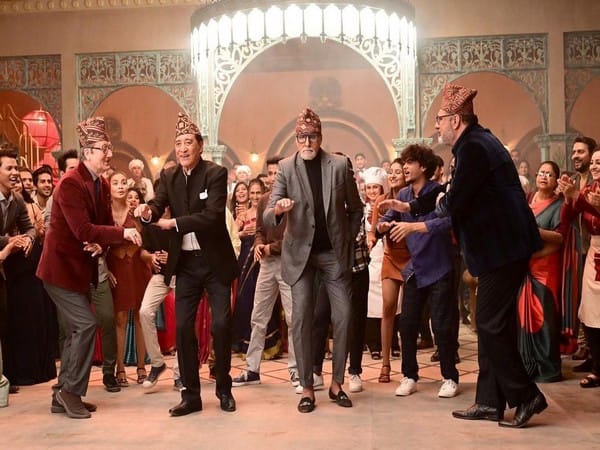
Barjatya recalled narrating the script to Amitabh Bachchan at his Bandra home, Jalsa.
“I had to take anxiety medication before and after,” he said, smiling. “He would underline the script and ask, ‘Which meaning do you want to convey? What were you thinking when you wrote this?’”
Barjatya may have been nervous, but the film won hearts when it was released. It also earned him his first National Award for Best Director.
“I never got this audience. I never get full houses in Delhi, Mumbai, and Bangalore. I went to a mall and saw it was full. My films worked in tier-two and three towns. Uunchai changed that,” he said.
Children today ask, ‘Why?’ I have no memory of doing that. If my parents said ‘let’s go to a wedding,’ you had to go. Asking might get you a slap. But kids today question, and it’s a good thing. I wanted to explore that
The next big leap was OTT—a new take on the joint family saga he had popularised in the ’90s. Bada Naam Karenge carries all the familiar Rajshri elements—weddings, close-knit families, tradition—but this time, it shows some cracks in the joint family, albeit gently. And the hero isn’t called Prem. He’s Rishabh.
The patriarch, Anand Rathi (Kanwaljit Singh), believes his family respects him. The truth is harsher. His children don’t want to disappoint him—not because they love him, but because he holds the power to exclude them. The realisation shatters him. He breaks down. And in an unusual move for Barjatya, it’s the elder, not the younger generation, that is told to change.
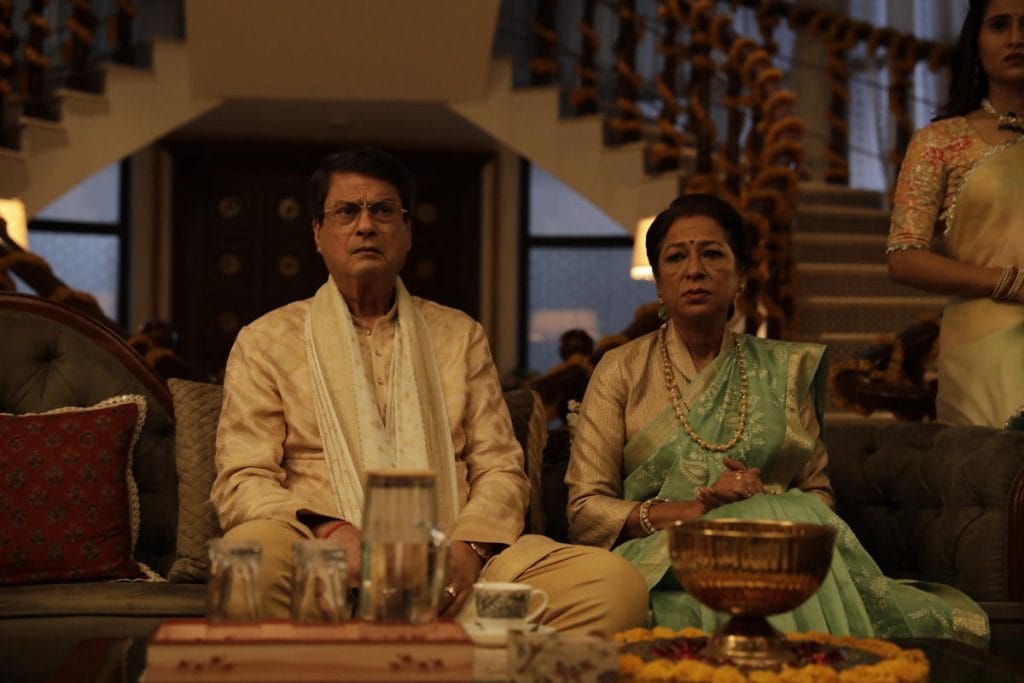
“Children today ask, ‘Why?’ I have no memory of doing that. If my parents said ‘let’s go to a wedding,’ you had to go. Asking might get you a slap,” Barjatya said, smiling. “But kids today question, and it’s a good thing. I wanted to explore that.”
The office of Rajshri Productions has remained in the same building since the 1970s, occupying two floors in an old Prabhadevi apartment block. Located a few metres from the Siddhivinayak temple, it’s easy to miss if not for the logo peeking out from behind a shop—Saraswati sitting on a lotus.
Segmented into the films and TV sections, the office looks like a sarkari daftar, except for the massive hologram of Salman Khan with open arms as Prem in Prem Ratan Dhan Payo and a giant poster of Uunchai. Awards line a shelf, a garlanded old photo of his grandfather, Tarachand Barjatya, hangs on a wall, and men in shirts and trousers walk the corridors. Stickers of shubh labh adorn many doors, and at lunch hour, employees gather with their dabbas.
OTT may never have happened without an external push.
“Everyone said thrillers and crime dramas work in OTT, and that it’s a different world,” said Barjatya. “But when Sony LIV approached me and said they wanted the family audience that watched Rajshri films, we decided to make it. For Bada Naam Karenge–I have kept the sadgi (simplicity) intact for OTT.”
Also Read: From Northeast extra, Chinese secretary to Paatal Lok’s Rose Lizo—Merenla Imsong’s many lives
The Rajshri family drama grows up
The idea for Bada Naam Karenge had been simmering for years. It traces back to a conversation Barjatya had with his father, Rajkumar Barjatya, in 2013.
“We liked this concept where a boy and girl know each other in Mumbai and then find they are being told to meet for the first time (for an arranged marriage),” he said. But the story never fully came together and after Rajkumar’s death in 2019, the idea stayed shelved. Over the years, however, Barjatya’s own children had begun asking their own whys, and pushed him to rethink the story
“My children asked me, ‘Why is partying or drinking bad?’ But yes, if parents disapprove, there is guilt,” Barjatya said. “I wanted to show how balance happens—how both can exist.”

When the Sony LIV offer came, those conversations took on new life. Discussions with his children and their friends who had moved to Mumbai from smaller towns reshaped the story. Barjatya had always been drawn to small-town India—many of his films were set in the tier-two and three cities like Mathura, Agra, and Lucknow, where tradition was not just respected, but expected. But this time, he wanted to explore the friction within that world, how generational expectations were changing.
That’s how Bada Naam Karenge protagonists Surbhi (Ayesha Kaduskar) and Rishabh (Ritik Ghanshani) were born—two youngsters from small-town Madhya Pradesh who meet during Covid, feel attracted to each other, then drift apart, only to cross paths again in an arranged marriage setup. It’s old-school love meets Gen Z rebellion, but in a Rajshri template.
But Barjatya wanted a younger director to keep the modern family drama fresh and authentic. He found that in Palash Vaswani, who had earlier helmed the popular feel-good family show Gullak.
I have to accept that we are not the same age that we were, and Salman now cannot play that same romantic hero. But we will work together on something different
“Sooraj sir watched Gullak, and then he called me. This was Rajshri’s first OTT project, and they wanted it to be special,” Vaswani said. “When I met him, he discussed Gullak in detail and narrated the script of Bada Naam Karenge. I felt the story was relatable, and I also had the greed to learn and work from the master filmmaker himself.”
As the showrunner, Barjatya was ever-present but gave Vaswani creative freedom.
“He would take my suggestions and even ask for them on his own and add them to the show,” Vaswani said.
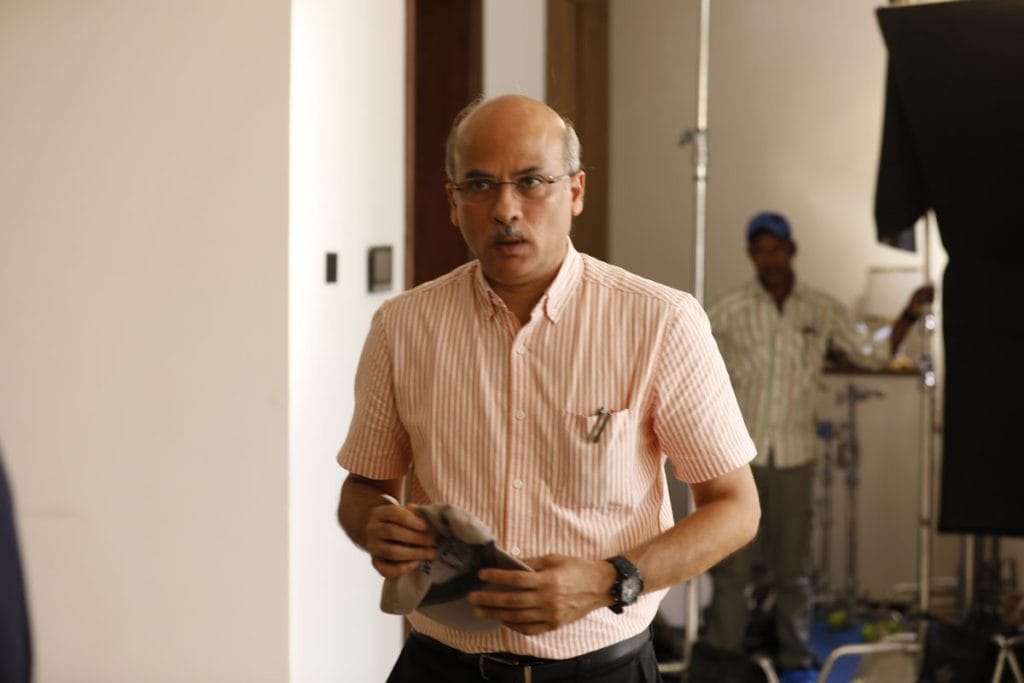
The show still has the typical Rajshri look and feel—opulent homes, shaadi excitement, sari-clad women who largely speak through their silence. What’s different this time is that there is also simmering tension among members of the hasta-khelta parivar. The relationships are more layered. Rishabh’s family, wealthy and traditional, is juxtaposed with Surbhi’s, where money is tighter and everyone pitches in for the monthly budget. Young people draw a few boundaries and the older generation pays heed without throwing a tantrum.
The casting reflects this balance of old and new. Bada Naam Karenge introduces fresh faces as the protagonists but also features veteran actors like Kanwaljit Singh, Alka Amin, Deepika Amin, and Rajesh Tailang—actors who are well-versed in bringing warmth and quiet gravitas to family dramas.
“There is a softness, sweetness, and purity in their films. I have always wanted to work with Rajshri Productions,” said Kanwaljit Singh. “I used to stay in a PG close to their office and would sometimes turn up in the office too.”
He had almost worked with Rajshri before—in a Japanese co-production that never took off. So when the production head reached out for Bada Naam Karenge, Singh was overjoyed.
“I really enjoyed my time on set, and even the office has this homely feeling,” he said.
Prem, parivaar, and perfect hosts
Dressed in a simple blue shirt and trousers, Sooraj Barjatya moved through the crowd at a special screening of Bada Naam Karenge on 28 January with the ease of a family host rather than a filmmaker presenting his latest project. He ushered guests in, checked on their comfort, and made sure everyone had eaten.
It was a packed day, with back-to-back interviews and an appearance scheduled for Indian Idol, which was doing a Rajshri Special featuring the studio’s most beloved songs.
“I’m very nervous about it,” he said in his unassuming manner.
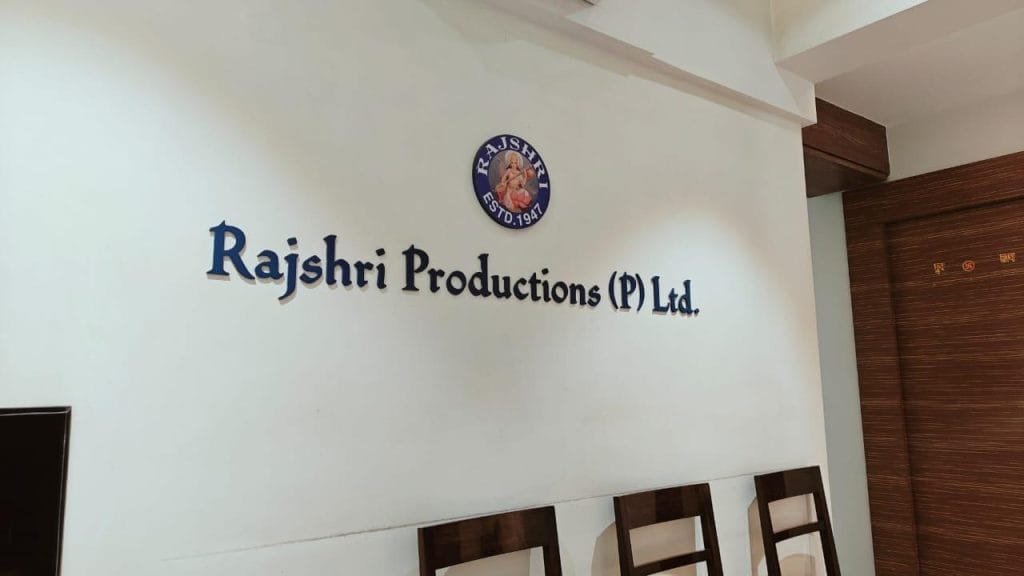
Despite decades of success, the man who turned Prem into a pop culture phenomenon still carries a quiet, endearing self-doubt. Even his workspace has changed little over the years.
“This is the room where he first narrated the script of Maine Pyar Kiya,” said his assistant Sandesh Surve, pointing to nondescript office with a glass-top table, a sofa, and shelves lined with old files. He has worked with Barjatya for years and is often the first to sift through the scripts that hopeful filmmakers send to Rajshri.
That 1989 romantic drama—Barjatya’s directorial debut—became a blockbuster, launching both Salman Khan and a cinematic style that would influence Indian family films for years.
Through the ’90s, his movies were not just box office juggernauts but cultural events. Hum Aapke Hain Koun..! was such a phenomenon that even BJP heavyweight LK Advani attended a screening with his family.
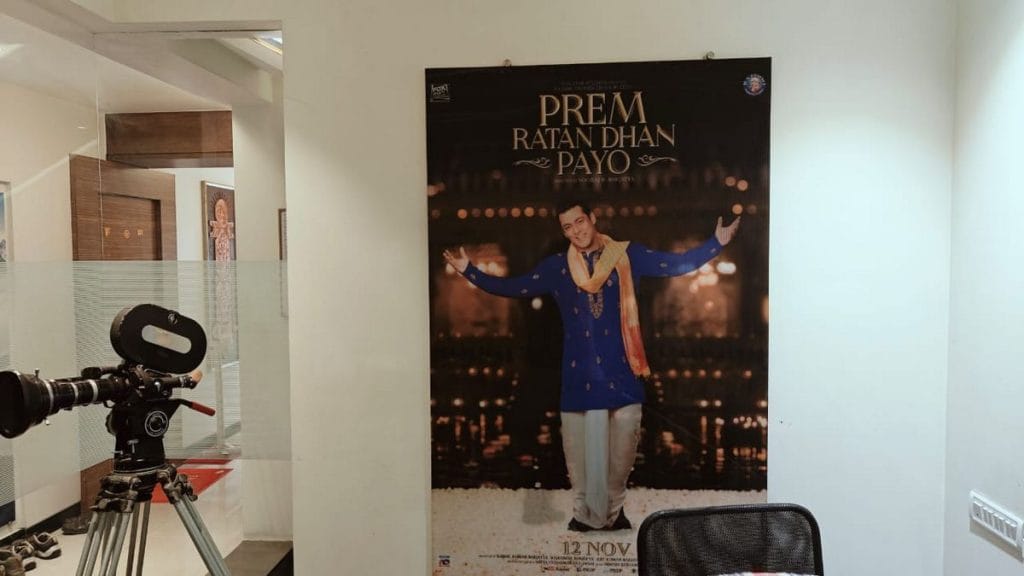
Barjatya, however, is reluctant to claim sole credit.
“Everybody contributed. What would Hum Aapke Hain Koun be without Madhuri-Salman chemistry, or how the DOP made Madhuri look, or the way Wah Wah Ram Ji was finally shot?” he said.
But without him, Rajshri Films might not have survived.
In 1990, the studio was on the verge of shutting shop, its Bombay office nearly sold to pay debts. That was when Sooraj Barjatya, then merely 21 years old, took over and created his magic with the very first ‘Prem’.
“The values or characteristics of Prem were mine, but it was Salman who added his own mischief and naughtiness to it,” he said, seated in the same office where he had once narrated the script that saved Rajshri.
The film’s success stabilised the company and cemented Barjatya’s brand of romance—steeped in both youthful charm and sanskaar.
“People say nobody is seedha like Prem,” he said with a laugh. “I think, maybe, someone learns a bit watching him.”
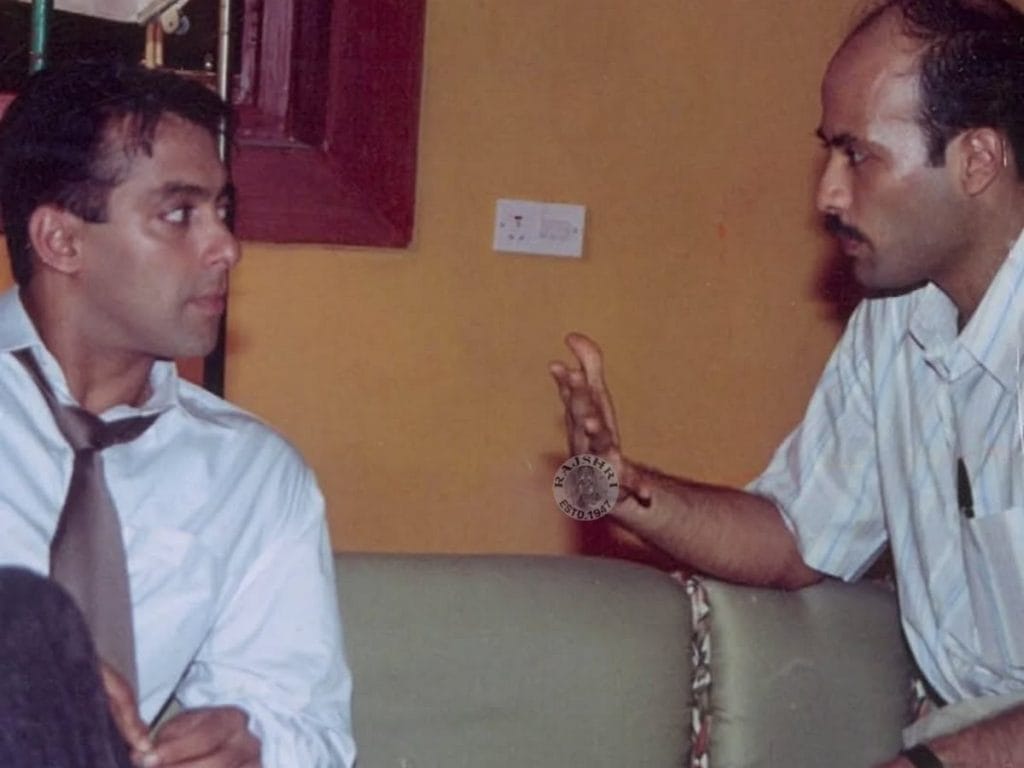
A beloved formula, but not infallible
From the grand Didi Tera Devar Deewana-style sangeet to the family vacation doubling as a honeymoon, Barjatya’s films created tropes that filtered into real-life weddings.
Vegetarianism was also a given. Marriage was the be-all and end-all for every ‘good’ girl in Rajshri films, although it did change a bit in Hum Saath-Saath Hain, where some daughters-in-law had paying jobs.
Barjatya films have no villains, except for people who are a bit misguided and can be reformed. It could be Poonam’s aunt Rama (Seema Biswas) or Mamta (Reema Lagoo) in Hum Saath-Saath Hain, who fears her adopted son Vivek (Mohnish Behl) might cheat her two biological sons of their inheritance. But usually, these ‘wayward’ characters find their way back into the family fold, and all is well in the end. There is no real tragedy in his films.
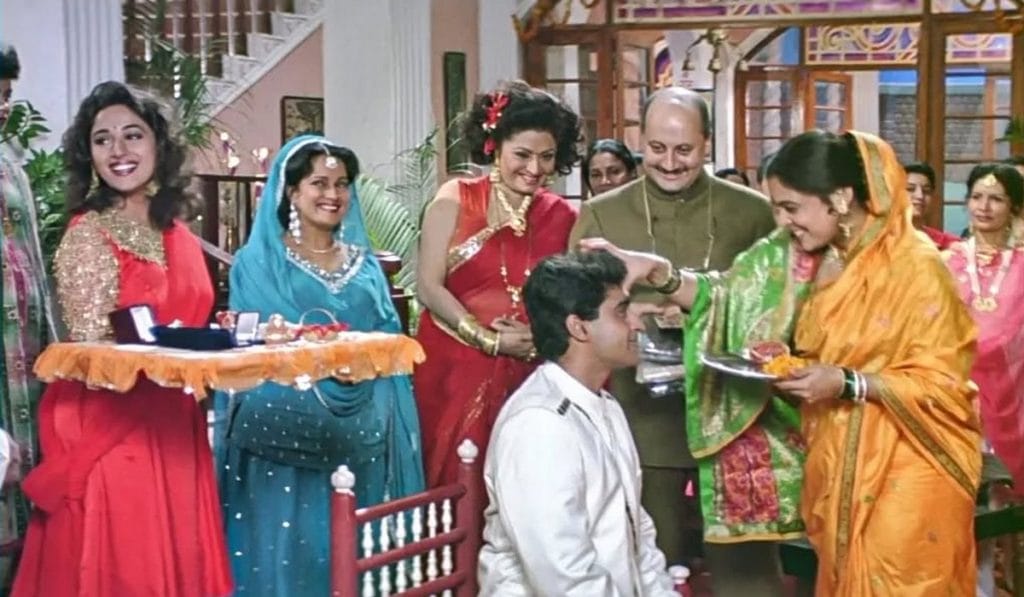
It was not just the films that showed happy families. Even the sets were similar.
“It felt like a big family outing,” said actor Himani Shivpuri, a staple in many Barjatya films like Hum Aapke Hain Koun..! and Hum Saath-Saath Hain. “Even though Madhuri and Salman were stars, even they would sit with us. Sooraj sir would talk to everyone, and everyone had chairs with their names. As a character actor, that felt really nice.”
Shivpuri had been working in theatre when she got a call from Rajshri Productions for a role.
“In our first meeting, he gifted me a silk saree, which is still a treasured possession,” she said. Barjatya’s assistant Surve also spoke about the bonhomie on set, including the tradition of sharing mithai: “We all love to eat and share,” he grinned.
But when it came to his films, Barjatya did diverge from his formula over the years, especially after Main Prem Ki Diwani Hoon (2003)—a love triangle with not one but two Prems— bombed. He learned a hard lesson.
“I tried to make the film by listening to what was ‘working’ at the box office, and it failed,” he admitted. “That’s why I stepped back and made Vivah from my heart, based on the world I know.”
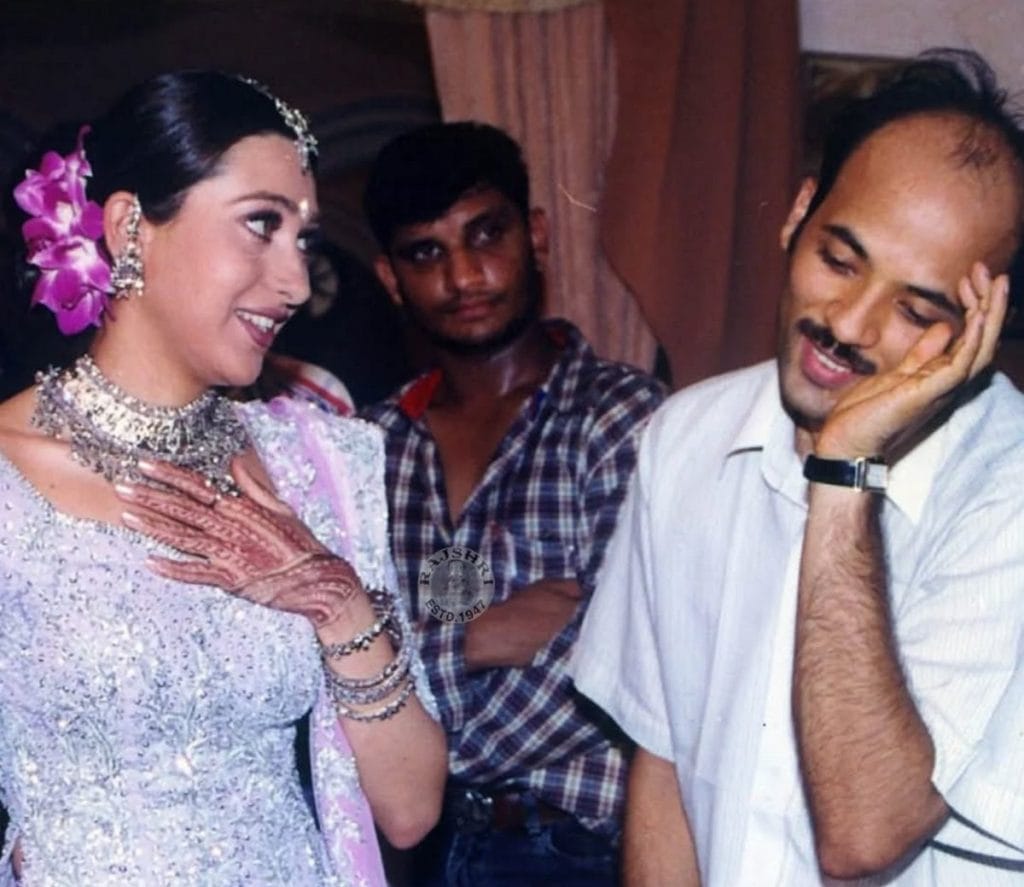
In 2006, he made Vivah, starring Shahid Kapoor and Amrita Rao, on a budget of Rs 8 crore. “A journalist asked me, why am I making a film very unlike the ages?” Barjatya recalled. But he had the last laugh—or glass of jal, as a popular meme from the film would say. The movie was a commercial hit, earning Rs 49.6 crore. The story of a Delhi-born, squash-playing businessman’s heir, Prem (Shahid Kapoor), falling for the simple, Madhupur-dwelling Poonam (Amrita Rao), who spoke pure Hindi, seemed far-fetched. But somehow, the improbable love story won hearts. To this day, Do Anjaane Ajnabee plays at Indian weddings. Its portrayal of a groom standing by his bride after an accident left her with burns was also appreciated.
Some aspects of Vivah, however, did not age so well. It received criticism for promoting the ‘fair is lovely’ idea. And the jal lijiye scene, where Poonam deferentially offers Prem a glass of water, became a meme a few years ago.
Barjatya remains unfazed by criticism.
“I grew up in Agra, and there were girls like Poonam. I was making what I have seen and experienced,” he said. “These movies were released decades ago, and people are still watching and making memes. There must be some recall value, something to watch, right?”
But Vivah was still very much within the Rajshri mould. His biggest leap yet was Uunchai, where instead of young love, elderly bromance took centrestage.
A trek—and ‘liberation’
As he approached his 60s, Barjatya found himself reckoning with a new stage of life.
“Once parents reach a certain age and children are off doing their own thing, what remains? Friendships, and the desire to still do things,” he said.
Every major phase of his life had led to a film, and now, Uunchai— a tale of friendship, ageing, and figuring out life after 60—was born from these musings.
It was his first film without weddings, romance, or Prem. Instead, it was about three old friends—Amit (Amitabh Bachchan), Om (Anupam Kher), and Javed (Boman Irani)—setting out to fulfil their late friend’s dream of trekking to Everest Base Camp. It also touched upon more complex familial relationships.
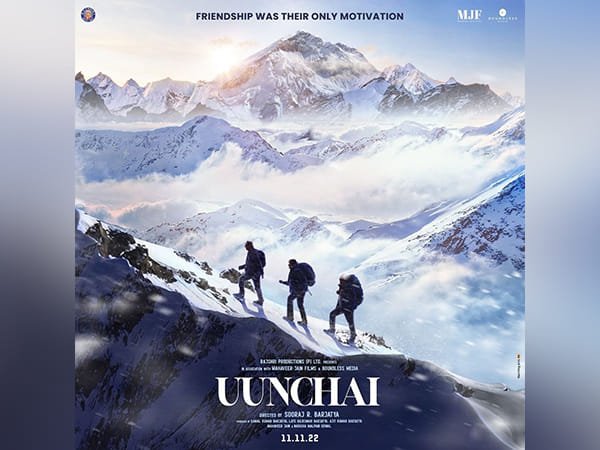
As the 1972 film Piya Ka Ghar’s song Yeh Jeevan Hai plays in Uunchai, its lyrics— Yeh jeevan hai, iss jeevan ka yehi hai rang roop (This is life, and these are its various forms and shades)—seem to echo Barjatya’s own quiet coming-of-age moment.
“Uunchai was an idea I heard about in 2016, but I thought maybe someone else should make it,” he said. “When it didn’t happen, I just wanted to challenge myself.”
I never got this audience. I never get full houses in Delhi, Mumbai, and Bangalore. I went to a mall and saw it was full. My films worked in tier-two and three towns. Uunchai changed that
The movie earned mixed reviews but was a box office success.“For once we have a narrative that addresses the concerns of the aged without finding faults in the present generation,” wrote Anuj Kumar in his review of the film.
For a director who had spent decades crafting stories in the controlled environment of studio sets, Uunchai was a trial by nature. Shooting with a 150-member unit—including actors, crew, and doctors—through unpredictable mountain terrain during the Covid pandemic was a test of endurance.
“Often, I thought I should go back, but Everest calls you.
Despite all the challenges, we actually finished making the film,” he said. “It was also liberating in a way because I tried to not show my typical marriages and family functions.”
Also Read: ‘A female director doesn’t mean no male gaze’—Kani Kusruti is so much more than All We Imagine
Keeping it simple
Sooraj Barjatya lives much like the father figures in his films—disciplined, hard-working, and simple.
“He is extremely punctual. If he says a shot is at 10, everyone is ready before that. Even Salman Khan would sometimes sleep in the vanity so that he’s on time for the morning shoot,” said actor Himani Shivpuri.
Rajshri shoots always begin and end on time, a tradition that carried over to their first web series too.
Off the set, Barjatya’s life is just as structured. His days start early with meditation.
“I spend some time with my family, then it’s regular work. At the office, there are creative and administrative decisions to be made, and in the evening I watch some cricket sometimes,” he said. He has also been reading the Puranas and just finished the Bhagavad Gita.
And he hasn’t let go of some of his most enduring traditions either. Prem is set to make a comeback. Barjatya is working on a new project, with speculation that Ayushmann Khurrana will play his next Prem.
“I have to accept that we are not the same age that we were, and Salman now cannot play that same romantic hero. But we will work together on something different,” he said.
One of his father’s favourite sayings still guide him.
“My father had a quote in his room. It said, ‘If I cannot run, I will walk, if I cannot walk, I will crawl,’ and that is my motivation,” he said.
Film critic and author Kaveree Bamzai wrote in a review of Bada Kaam Karenge: “If ever the Indian family needed an ISI mark, it would be provided by the Barjatyas.”
But unlike his on-screen patriarchs, Barjatya wants to evolve and grow, and take into account that the world has changed. Still, he’s clear that his films don’t need to do a complete 360.
Some Rajshri traditions have faded, but one ingredient, he says, keeps people watching and rewatching his films
“The sadgi has remained,” he said.
(Edited by Asavari Singh)



